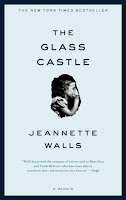
If you are following along, got through yesterday's somewhat confusing explanation of homeopathic remedies, and are still wanting to try the self approach, here's the next part you need to know.
Once you have figured out which potency may be appropriate for the symptoms or condition you want to work on, the next question is: "How much should you take and how often should you take them". When using over-the-counter medications of the conventional variety, the label typically provides quite detailed instructions for use. In some cases, the differences between adult and child administration is also described, as well as a number of warnings on when, why and how, not to use the medication. The combination homeopathic remedies such as Oscillococcinu for flu symptoms, or Sabalia for seasonal allergies often do include some instructions of dosage. If you are using single remedies however, you are unlikely to find such directions.
The combination remedies are often prepared as a vial containing a number of globules or as single tablets. For these remedies a "dose" is one vial or one tablet. When buying the single remedy preparations, 4 to 8 globules in typically considered one dose. Some practitioners consider a cap full or lid full as one dose. If you are buying tablets, one tablet is considered a dose. For liquid preparations one dose is considered 10 drops unless otherwise indicated.
One you have figured out what is considered to be a "dose", the next step is to figure out how often to take this dose.
For serious pain or suddenly occurring symptoms such as injury due to traumatic events or the sudden occurrence of a high fever, it is recommended that you take one dose of your remedy every 5 to 30 minutes until the pain is gone. The typical potency for these types of conditions would be 6C, 12C or 30C, with 30C, the most popular. 200C can also be used for these situations. If the pain symptoms begin to improve but linger, continue taking the dose until they are resolved. If after 6 doses, you have experienced no improvement what-so-ever, you probably don't have the right remedy for your condition and should consider something else instead.
For less painful conditions such as bad coughs, or stomach upsets where you need help from the symptoms within a 24 hour period but not on such an immediate level, you might try one dose of your remedy every 1 to 2 hours. These symptoms often respond well to potencies of either 6C or 12C. If you don't get improvement within the first few doses, consider another remedy.
Longer term conditions such as sore throats, influenza (without high fever or pain), colds, or teething, will often respond well to potencies of 6C or 12C with one dose taken every 4 to 8 hours. This is often the recommendation of the combination remedies for influenza or cold symptoms.
Symptoms that are considered chronic, or long-term, but not as serious, such as mild exhaustion, sinus conditions, or joint stiffness will respond to lower potencies in the 6X or 6C range. For these conditions, consider taking one dose 3 or 4 times per day for up to 10 days to see improvement in the symptoms.
Although the principles of homeopathics don't suggest "preventative" use of remedies in the same concept that conventional medicine does, there are some applications for prevention of symptoms. For these situations you might consider 1 dose 3 or 4 times per day in the same fashion as for chronic conditions. The seasonal allergy combinations suggest this type of regime during allergy season before the symptoms appear. Nosodes, such as Influenzinum, the homeopathic alternative to vaccination are recommended as one dose per day over a month or more.
And that's the basics to get you started. The keys to homeopathic use or for that matter, any alternative healing use, in my opinion, are to remain flexible and listen to your body. Perhaps the reason why much of this type of medicine appeals to me is because there are far less rules than in conventional medicine. Taking too little or too much of a remedy won't adversely affect you. If you take 10 globules instead of 8- don't panic. If you forget to take a dose you can double up the next time. You don't have to count the minutes between doses or anything restrictive like that. The doses don't change for children from what they are for adults. You don't adjust the amount for body weight or age. You don't have to reconsider the administration if you have underlying conditions or are taking other medications. You don't need to watch for side effects or drowsiness or feel afraid to go about your activities. You can take homeopathics at the same time as conventional medicines. The homeopathics won't interfere with the conventional medicines, but you might not see as much improvement from the homeopathic that you otherwise would. I don't suggest you eliminate prescribed medications in favor of homeopathics without consulting a homeopathic physician!
Bottom line is: If your symptoms have improved, stop taking the remedy. If they reappear, repeat as needed. If nothing happens, try a different remedy.
Relax and enjoy the freedom and relief that homeopathic medicine can bring.
















